Six Climbing Trips That Are No-Brainer Holiday Gifts
This article originally appeared on Climbing
As the holidays are approaching, we're all lining out gifts for friends and relatives. It can be stressful, particularly if your special person is a climber. It's impossible to know exactly what they need in their rack or quiver. (At least without just asking them, and that spoils the surprise!) So when thinking about gifts this year, consider giving your friend or loved one an experience instead of a gift. You might go wrong if you're trying to buy a specific harness or set of rock shoes, but the gift of a climbing trip is a sure thing.
Giving the gift of a climbing adventure doesn't have to break the bank, either. You could simply buy their plane ticket and let them take care of the rest, but even if you want to pay for their whole experience (or tag along yourself) getting it all done under $1,000 is reasonable. If you're down to camp and eat cheap, you can easily spend a week near a world-class crag without spending more than a few hundred dollars.
Below are six superb climbing destinations for the winter season, each perfect to "gift" as a holiday adventure to the climber in your life.
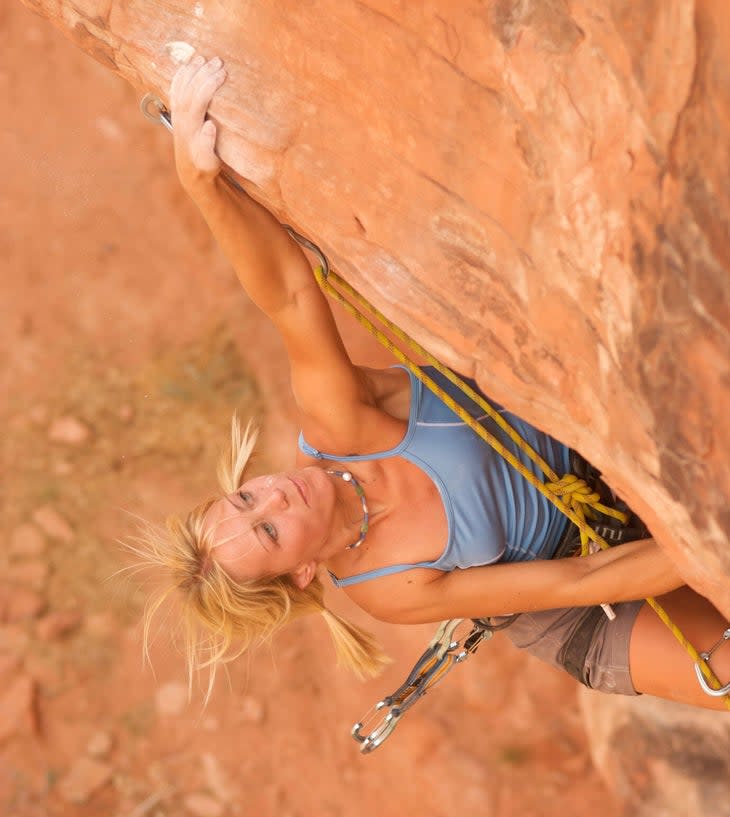
Best All-Around: Red Rock Canyon, Nevada
While perhaps not as well-known as Joshua Tree or Indian Creek, Red Rock is one of the southwest's climbing meccas. This sandstone paradise is home to several thousand routes, from multipitch trad to bouldering to sport climbing, with one of the best concentrations of moderate routes in the country, and it's all just 30 minutes outside of Las Vegas. Red Rock is also a standout winter climbing destination, with clear skies and temperatures regularly hovering in the 50s and 60s, rarely going below 40.
Access
Access to the main "scenic drive" portion of Red Rock National Conservation Area is via timed-entry reservation from October 1 to May 31 (8:00 am to 5:00 pm). The entry fee is $15 for a car and $10 for a motorcycle or scooter, but you can skirt this with an America the Beautiful or other Federal Recreational Lands pass--though you'll still have to pay a $2 reservation fee. However, much of the climbing at Red Rock can easily be accessed from Calico Basin and the Red Spring parking lot, which is free of fees and reservation requirements.
Camping, Food, & Amenities
Given that Summerlin (and the Las Vegas Strip) are only a dozen or so miles down the road, options for dining and lodging are limitless during a Red Rock trip. Camping is also available at Red Rock, and the campground has over 50 single sites, as well as larger group sites and RV sites. Fees vary by season, you can find more info and make a reservation HERE. Climbers can check out local boulder den The Refuge to meet partners and grab beta. On rest days, be sure to check out Main Street and the Las Vegas Arts District for an eclectic mix of thrift & vintage stores, restaurants, and breweries.
Classic Routes
Red Rock--oft-called "5.7 Heaven"--is known for its jaw-dropping concentration of moderates, and a route list really depends on what your gift recipient is into. A few moderate favorites include Big Bad Wolf (5.9 220 ft), The Nightcrawler (5.10+ 550 ft), Great Red Book (5.8 250 ft), Natasha's Highball (V2 PG13), and of course, the legendary Epinephrine (IV 5.9 1,600 ft). You can find more info and beta on the Mountain Project's dedicated Red Rock page.
Gear Recommendations
Rope: Routes can be multi-pitch or short sport lines, meaning you might need two ropes for rappels or one rope for lowering. There are thousands of routes here, making it impossible to accurately suggest rope length. Check the guidebook or mountainproject for details on what you’ll need for your planned climbs.
Rack: Again, depends on what you’re doing. A dozen draws for the sport routes will usually suffice, while you may need up to two dozen for the longer routes, and for the trad routes the rack will vary wildly--you might need micro cams or five-inchers, or both.
NOTE: One of the most important rules in Red Rock is to NEVER climb when the rock is wet. Sandstone is soft and brittle after rain, and climbing doesn't just scar the rock, it can be dangerous, both for you and those below you. Most local climbers advise waiting 24 to 72 hours after rain before climbing.
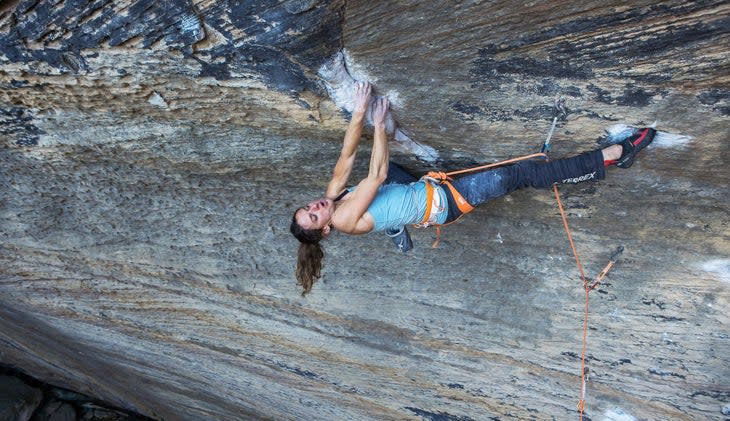
Best for Sport Climbers: Red River Gorge, Kentucky
Kentucky's Red River Gorge is arguably the biggest climbing spot east of the Mississippi. But in terms of quality and quantity for single-pitch sport climbing, this densely-forested canyon system is second to none. The Red is heaven on earth for sport climbers, with several thousand routes spread out over more than half-a-dozen major crags and 100 cliffs. Climbing in the Red is best in spring and fall, though the odd sunny, warm winter day isn't out of the question, and brutally humid summer temps can be avoided by climbing in the early morning or evening.
Access
The Red is approximately an hour's drive from Lexington, Kentucky, and flying into Lexington is the best way to arrive from further afield. The larger cities of Cincinnati and Louisville may allow for cheaper or more direct flights and are also quite close (approx. 2 hours). The Red is divided into two main sections, the North Gorge and South Gorge, and while both regions hold plenty of climbing, sport climbers will find more developed crags in the south. Accessing most trails and routes in the area is free, although there are some locations, like the privately-owned Graining Fork Nature Preserve, that require a permit and/or reservation. Some parking lots, like Muir Valley, will also require a fee to park. In general, however, access restrictions in the Red are minimal, if any.
Camping, Food, & Amenities
No discussion of the Red would be complete without mentioning Miguel's Pizza. This iconic climber hub--open since 1984--is the center of the Red's climbing community, offering outstanding food, cheap campsites, and a gear store. They also have several small houses available for rent. For climbers looking to connect with the local scene, camping at Miguel's is the move, but there are tons of other campsites and lodges scattered throughout the Red. The Land of the Arches is a solid choice, as is the Chocolat Inn and Lago Linda Hideaway. Backcountry camping is always an option, too, and fees are quite cheap: $5 per night, $7 for three nights, or $50 for an annual pass. Learn more HERE. For good grub, Miguel's is a surefire bet, but it can be quite crowded in peak season. Other local favorites include the Red River Rockhouse, RedPoint BBQ, Hop’s beer garden, Sky Bridge Station, and Daniel Boone Coffee. The latter also has a great campground behind it.
Classic Routes
The Red is primarily a single-pitch destination, and few walls stretch above 100 feet. Some classics include Amarillo Sunset (5.11b), Roadside Attraction (5.7), Witness the Citrus (5.11c), Snozberries (5.11d), Brown Eyed Girl (5.10a), Orange Juice (5.12c), and 27 Years of Climbing (5.8). You can find more info and beta on the Mountain Project's dedicated Red River Gorge page.
Gear Recommendations
Rope: Most climbers come to the Red for the sport routes. One 70- or 80-meter rope will usually suffice, but check the guidebook before heading up.
Rack: 10 to 15 quickdraws for the sport routes. The Red also has plenty of trad; you’ll need a wide range of cams and some nuts--consult local authorities.
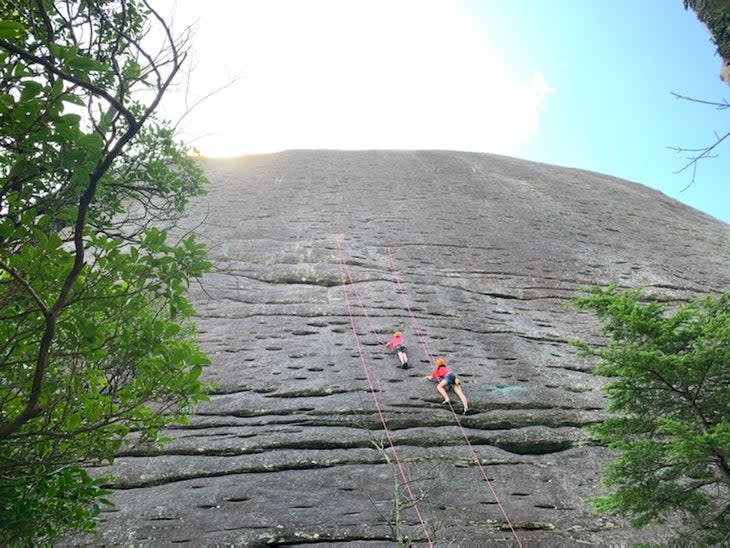
Best for Trad Climbers: Asheville, North Carolina
While not a climbing destination in and of itself, Asheville is surrounded by some of the best rock in the southeastern United States, particularly if trad is the goal, and most of it is within 30 minutes to an hour away. From single-pitch crags like Rumbling Bald and Eagle Rock to the granite monolith of Looking Glass Rock and sprawling ramparts of Linville Gorge, there's a ton of diversity around Asheville, and easily the best multipitch climbing in the southeast. It's also another excellent fall and winter climbing destination, with moderate temperatures and clear skies.
Access
Access varies depending on the crag you're headed to, but many of the best crags around Asheville, like Linville Gorge and Looking Glass Rock, are free of access fees and reservations--though there are seasonal closures for nesting peregrine falcons. In some spots, like Rumbling Bald, you'll need to fill out a permit at the parking lot. For crag-specific access info, check in with the Carolina Climbers Coalition.
Camping, Food, & Amenities
Camping, again, will vary depending on which crag you're headed to, but many--such as Linville Gorge--offer free camping, though a reservation is required. There's plenty of camping in Pisgah National Forest (see guide here) as well, and tons of free dispersed sites to be found, such as along the Forest Service roads outside of Looking Glass. If camping's not ideal, there are plenty of AirBnbs and hotels in Asheville proper, and restaurants galore (Check out Laughing Seed Cafe and Rocky's Hot Chicken Shack). Stop in at local gym Cultivate Climbing to meet buddies and snag beta.
Classic Routes
The slabby walls of Looking Glass Rock are a must-try, and The Nose (5.8 400 ft) is the premier line on the formation. Sundial Crack (5.8 430 ft) is another similar line nearby, and for something a bit harder, head to the steeper north side for The Seal (5.10a 400 ft) or the area testpiece Glass Menagerie (5.13a, 5 pitches). On the quartzite walls of Linville Gorge, visiting climbers should check out Table Rock to fire up mellow lines like White Lightning (5.8), North Ridge (5.5 250 ft), Rip Van Winkle (5.7 400 ft), and Peek-a-Boo (5.5 400 ft), or head over to Hawksbill Mountain for something a bit harder. Rumbling Bald is home to a slew of single-pitch trad classics, like Fruit Loops (5.7), Frosted Flake (5.9), and Shredded Wheat (5.11), as well as quite a few great boulder problems, including Dime Crack (V4).
Gear Recommendations
Rope: The Asheville area has some of the longest routes in the Eastern U.S., but also has a good number of single pitch and some sport. For crags such as the imposing wall of Laurel Knob you’ll need two ropes for the rap descents and ditto for most of the climbs at Looking Glass.
Rack: 10 to 15 quickdraws for the sport routes, and a fat rack of doubles and triples for the trad routes, plus a rack of nuts. Small and micro offsets work wonders in the “eyebrows” at Looking Glass, often slopping in where standard cams and nuts won’t.
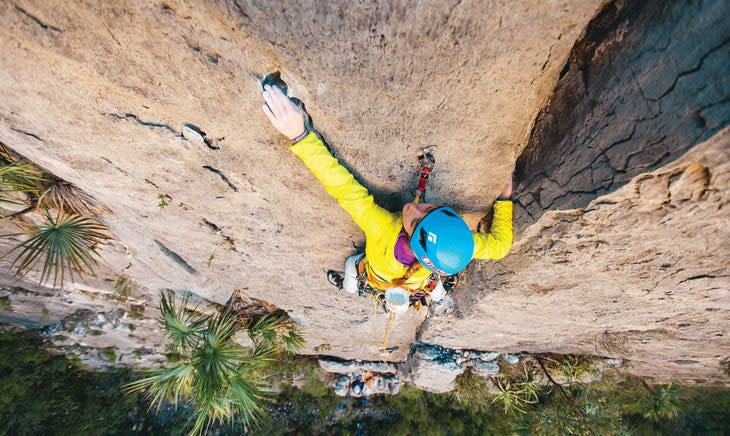
Best for Multipitch Climbers: El Potrero Chico, Mexico
The limestone walls of El Potrero Chico, Mexico soar over 2,000 feet up from the floor of the circular basin below, and when it comes to moderate multipitch climbing, Potrero is a veritable paradise. It's also unique in that almost all the routes are fully-bolted, so climbers don't need any trad gear (though alpine draws will help with rope drag). A rope, a few slings, a dozen draws, and a PAS will get a climber up most of Potrero's classic long lines.
Jeff Jackson, a former Rock and Ice editor who helped develop climbing at Potrero Chico in the late 1980s, recommends that climbers visiting Potrero be a "solid 5.10 leader with multipitch experience" if they want to really hit the best routes. It's also an excellent winter climbing destination, with temperatures often in the 60s and 50s, though it can get crowded around the holidays. "It'll still get cold in Potrero," says Jackson, "and you can have periods of fog and drizzle, so if you want to hit it at its prime, November and March are really good."
Access
Potrero Chico is approximately three hours by car from Laredo, Texas. If flying, most climbers fly into Monterrey, an hour's drive away from Potrero and the town just outside, Hidalgo. "Your hostel will usually come pick you up in Monterrey," says Jackson. "You just get a ride straight from the airport, no need to rent a car. It couldn't be any easier." You can find more information about access and directions on the Potrero Chico website.
Camping, Food, & Amenities
Visiting climbers can camp at a number of campgrounds, including Rancho Sendero, but many parties opt to stay in the many hostels and lodges nearby. "My favorite place to stay is Ariel's Chalet," says Jackson. "It's right inside Potrero, with the walls all around you." Jackson also recommends La Posada and Homero's. The former has incredible food, says Jackson, and "Homero's is the original Potrero Chico spot. [He] invited us to stay there back in the 1980s." Homero's offers camping, shared hostel rooms, and private rooms.
Be sure to check out the local mercados, held biweekly in Hidalgo, to enjoy fresh produce and connect with locals. "What people really remember about Potrero isn't just the low commitment, high-quality sport climbing," says Jackson, "but the friendly local people. The relationships you make with the locals here are incredible--some of the coolest people I've met anywhere."
Classic Routes
"Potrero has hundreds upon hundreds of routes," says Jackson, "but where it shines are the moderates, the 10 to 20-pitch 5.10s." El Sendero Luminoso (5.12+ 1,500 ft) is perhaps the most well-known route in the area, and for good reason. Other favorites include Pancho Villa Rides Again (5.10c 500 ft), Will the Wolf Survive? (5.10a 400 ft), Time Wave Zero (5.12a 2,300 ft), and Space Boyz (5.10d 1,000 ft). "It's so stacked," says Jackson. "If you climb 5.10 to 5.11, man you could spend months down there climbing moderates, and never do the same route twice." Check out El Potrero Chico's Mountain Project page for more.
Gear Recommendations
Rope: Depends. You’ll need two ropes for the raps on many of the multi-pitch, and a single 70-or 80-meter cord for the one-pitch sport lines.
Rack: Most routes are fully bolted; 10 to 25 quickdraws for the sport routes plus plenty of long slings.
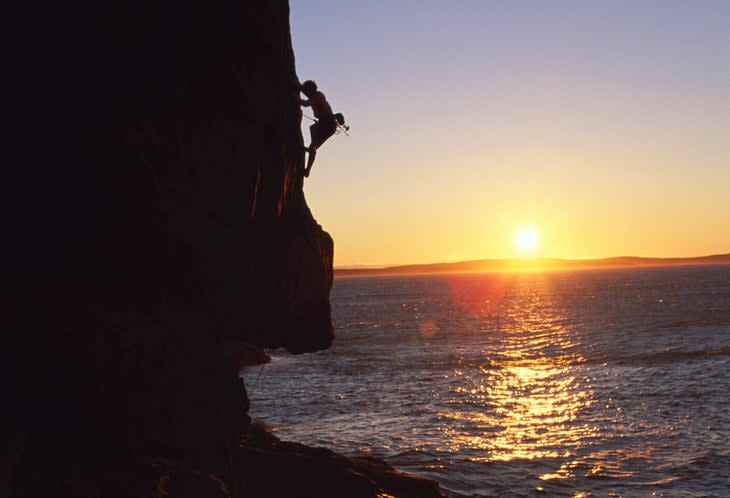
Most Unique Climbing: Acadia National Park, Maine
Opportunities to climb on sea cliffs are few and far between in the continental United States, but Acadia National Park is a rare exception. Spanning 47,000 acres of Mount Desert Island in southern Maine, Acadia has several superb climbing areas, including Otter Cliffs, Precipice, and Great Head. The climbing here is mostly easy trad from one to three pitches, on coarse-grained pink granite with superb face and crack. There's also some oceanfront bouldering along the park's beaches. The marine climate means that rain and snow are a regular occurrence during the winter--and climbing by the ocean in freezing temps is nobody's idea of a good time--so most climbers visit Acadia from May to September.
Access
The best climbing at Acadia is inside a national park, so it's subject to the usual fees. An America the Beautiful pass or another Federal Recreational Lands pass will get you inside. If not, it's $30 per car and $25 per motorcycle. The good news is that these passes are good for seven days, so one purchase should serve for the entire trip. Climbing is free, although groups larger than six "sharing the same affiliation" need a permit to climb at Otter Cliffs, even if they separate into smaller parties.
Camping, Food, & Amenities
There are several campsites within the national park, but Blackwoods Campground is the closest campground to the climbing at Otter Cliffs (within walking distance), and sites are reservable up to two months in advance. Tent fees are $30/night during peak season (May to October). The town of Bar Harbor is only 10 minutes down the road, and you'll find groceries, pharmacies, etc, as well as AirBnbs and hotels if camping isn't the move. Check out Paddy’s Irish Pub & Restaurant on the harbor for a pint and fresh seafood. Geddy's is another local favorite.
Classic Routes
If only visiting one spot in Acadia, Otter Cliffs is the move. This is Acadia's classic "sea cliff" crag. Most of the routes here, both in Otter Cliffs and other Acadia spots--are super mellow. Most classics are sub-5.10 and only one or two pitches, though there are a few 5.12s. Some Acadia favorites include Adair by the Sea (5.10b PG13), Guillotine (5.10a), Story of O (5.6 250 ft), Old Town (5.7), and The Great Chimney (5.5). Grant Simmons' guidebook Rock Climbs of Acadia is the local tome, including beta for over 300 climbs. Pick it up if you want to do a deeper dive into the best Acadia has to offer.
Gear Recommendations
Rope: Routes tend to be on the shorter side; a single 70 or 80-meter rope usually suffices, but check the guidebook before heading up.
Rack: The majority of routes require gear but you can also often toprope. Pack a double set of 1- to 4-inch cams, a small set down to 00, and a healthy rack of wired nuts, plus long slings.
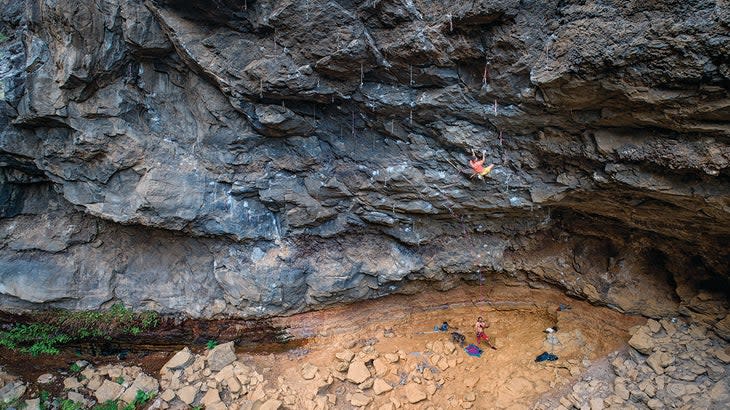
Best If You Can Afford It: Maui, Hawaii
It's not cheap, but if you're looking to send a loved one on a truly one-of-a-kind climbing holiday, Maui might be the ticket. Sport climbing is the dish of choice in Maui, and there are several hundred routes on the island, as well as bouldering and a few longer routes (up to 400 feet) on the west side. Jackson, who is now based in Maui, said that although the climbing is spectacular, "a lot of the stuff here is still on the down-low." You won't find much about climbing in Maui online, and it'll be hard to plan everything out in advance, but once they arrive, your buddy is guaranteed to have a blast if they're willing to hit the ground running and go with the flow.
You can climb in Maui year-round, says Jackson. Summer is hotter, "but if you get a cool breeze, it's completely doable, and the rates on hotels are better." He added that "the climate is tropical, but not like beaches in Thailand or Mexico, where you get hot, muggy climbing." To avoid the crowds, Jackson's main advice is to not worry so much about seasons, but instead focus on steering clear of holidays--fall and spring break, Thanksgiving, Christmas, New Year's, and so on--when tourists descend on the island in swarms and rates go up.
Access
There's tons of climbing on Maui, but finding it can be difficult, and many areas have tenuous access due to environmental and/or local political issues. "The climbing is extensive, the environment is still pretty pristine," says Jackson, "and at any given time there are up to a quarter-million tourists on the island. So it behooves the locals to keep in on a need-to-know basis."
That's not to say that visiting climbers aren't welcome--but the best way to go about climbing in Maui is to get boots on the ground and poke around. A crag called Plenty Kiawe is the best starting point, says Jackson. "My advice would just be to show up there--you can Google it--and go there on the weekend, meet people, and get beta." The crag has approximately 30 bolted routes from 5.9 to 5.14b.
Camping, Food, & Amenities
Plenty Kiawe has free camping, and is the best spot to stay if you're looking to be close to the climbing & save cash, says Jackson. "It's the most beautiful location you can imagine, right on the ocean on an amazing black rock beach, further up there's a nice grassy area with wild basil." As far as food, "if you wanna spend some money, the best place is Mama's Fish House," he says. "Reservations are months out--they have all the best local dishes and it's a beautiful sunset location for a romantic dinner--but you'll pay a lot of money." Pa`ia, on the North Shore is a "cool little surf town with great places to eat," he says. "They've got a little fish market with good food... incredible flatbread pizza.
Saving cash is going to be tough on a Maui trip, says Jackson. "Maui has a fairly insane cost of living. I mean, Hawaii might have the most expensive cost of living in the U.S. Food, beers, hanging out... Man, it's all expensive. Don't expect to show up and have it be easy and cheap." However, tons of tourists visit the island year-round, so there is competition, and if you do your research the infrastructure is there to find good deals.
Classic Routes
You won't find many Maui routes listed on Mountain Project--or anywhere, for that matter--and that's probably one of the reasons it's still such a high-quality destination. But once you do make a local connection, Jackson recommends Jahawaiian (5.12a), Cool Colors (5.11a), and Wingspan (5.12b) at Kiawe. "There's also a bunch of harder stuff up to 5.14, like Alba (5.14a)," he says. Difficulties at Kiawe go right to left--easier to harder--in difficulty, so it's fairly easy to eyeball once you're there.
Gear Recommendations
Rope: Maui has multi-pitch but you’ll likely go for the sport climbing. One 70-meter cord usually suffices.
Rack: Bring 20 quickdraws and a few long slings.
For exclusive access to all of our fitness, gear, adventure, and travel stories, plus discounts on trips, events, and gear, sign up for Outside+ today.

